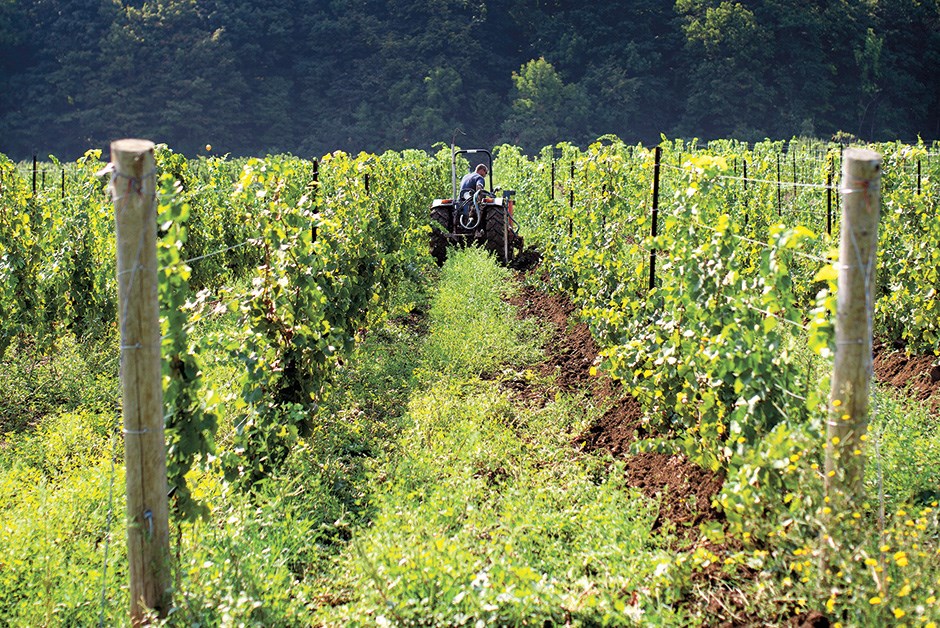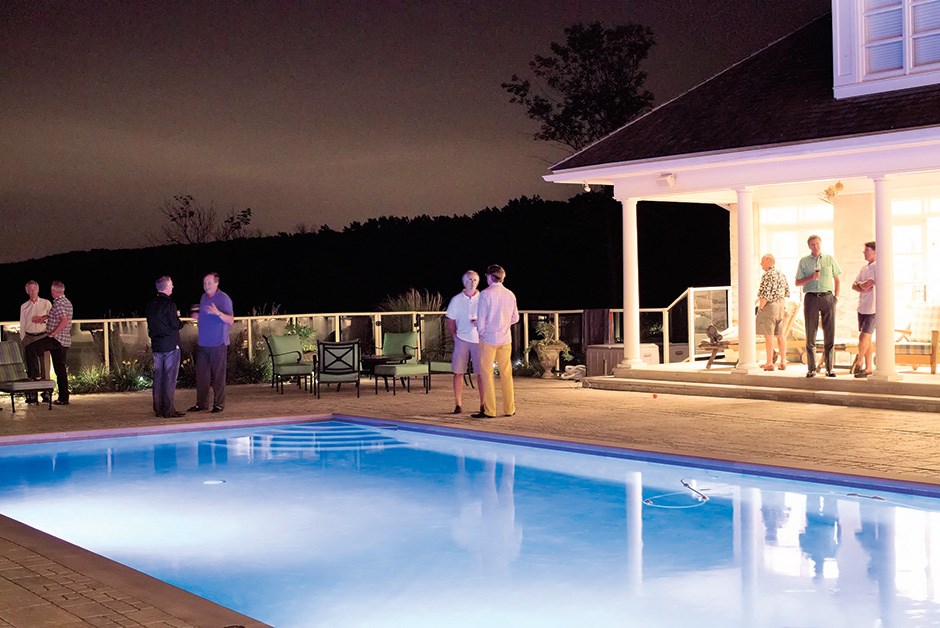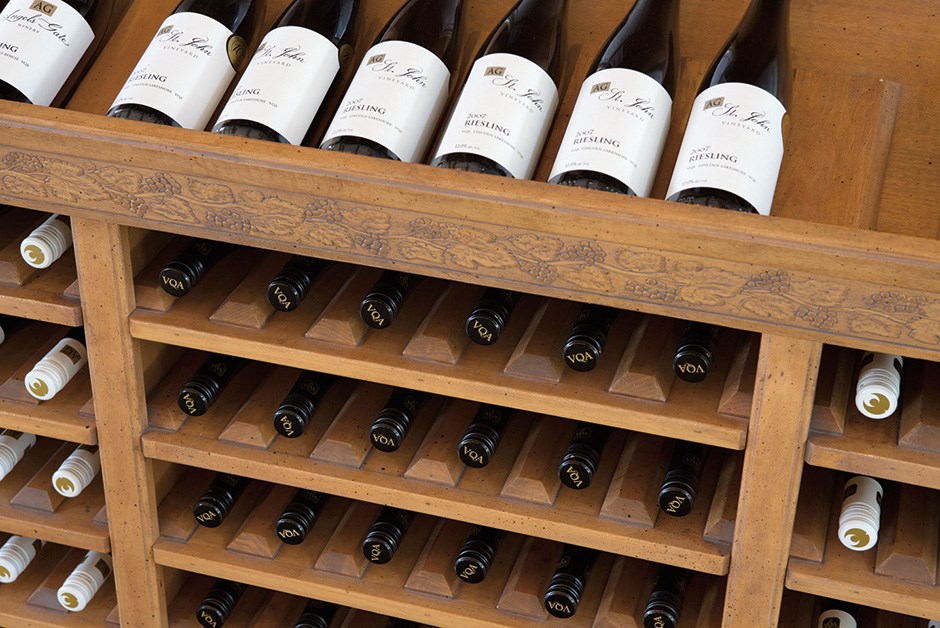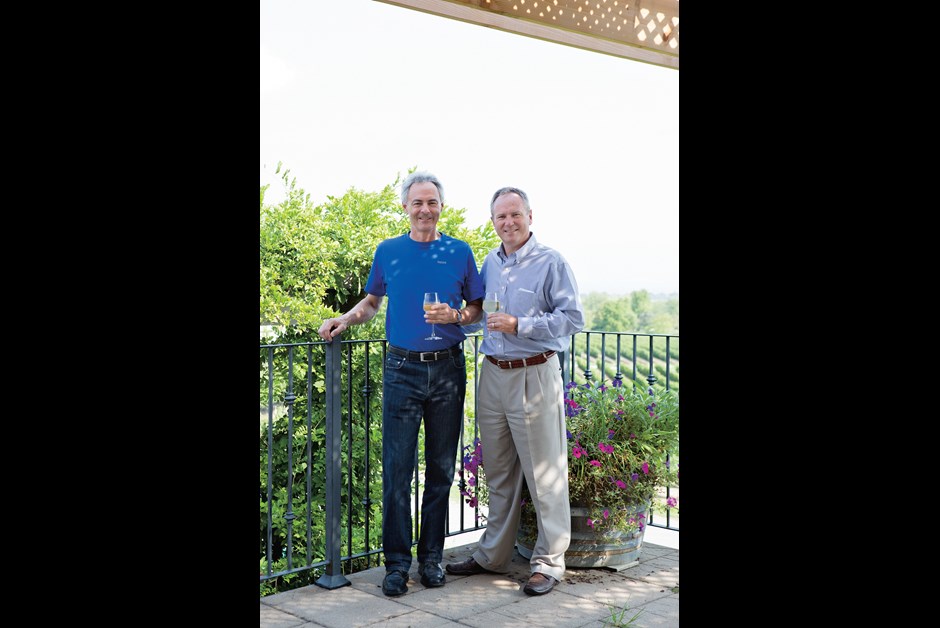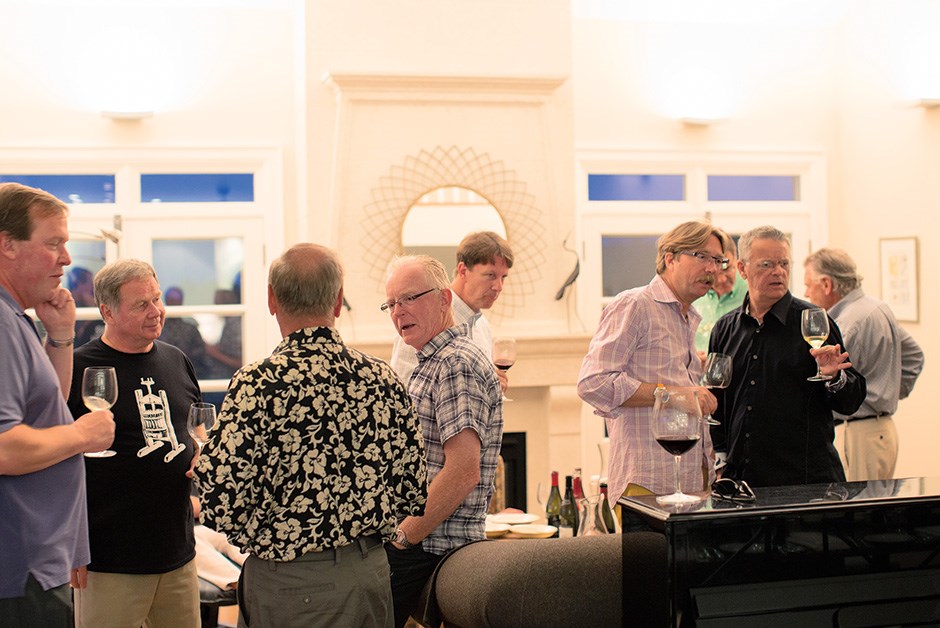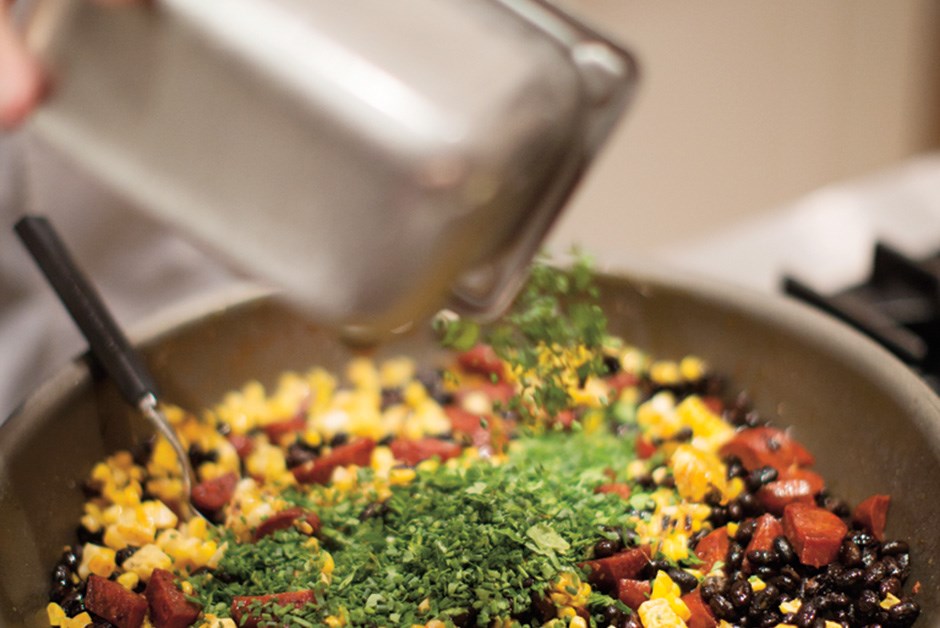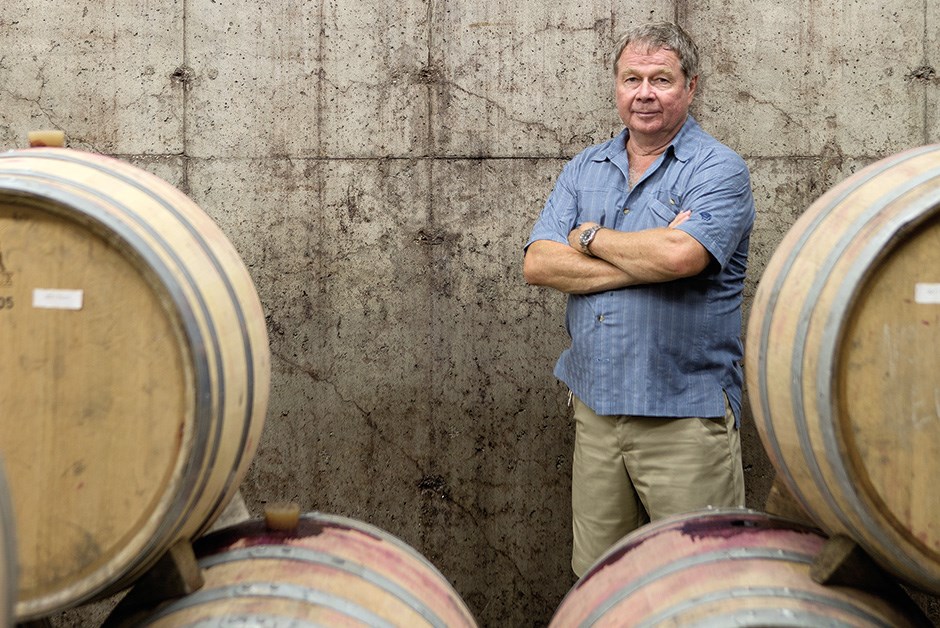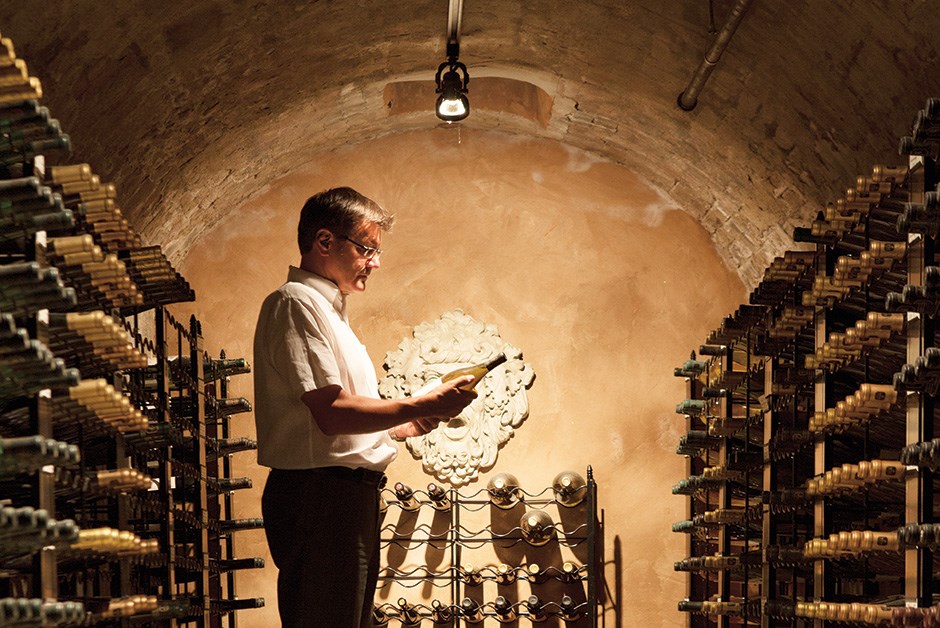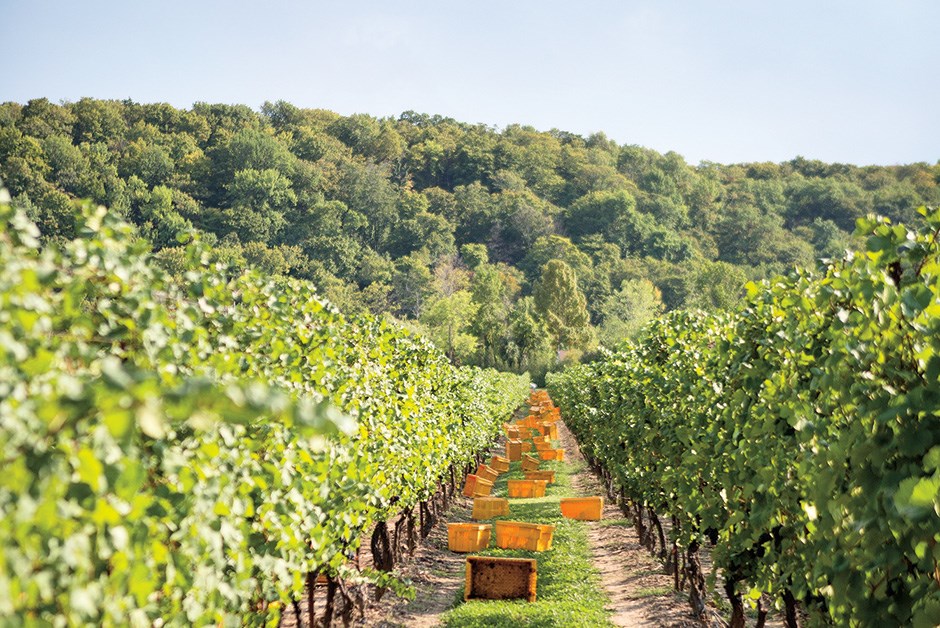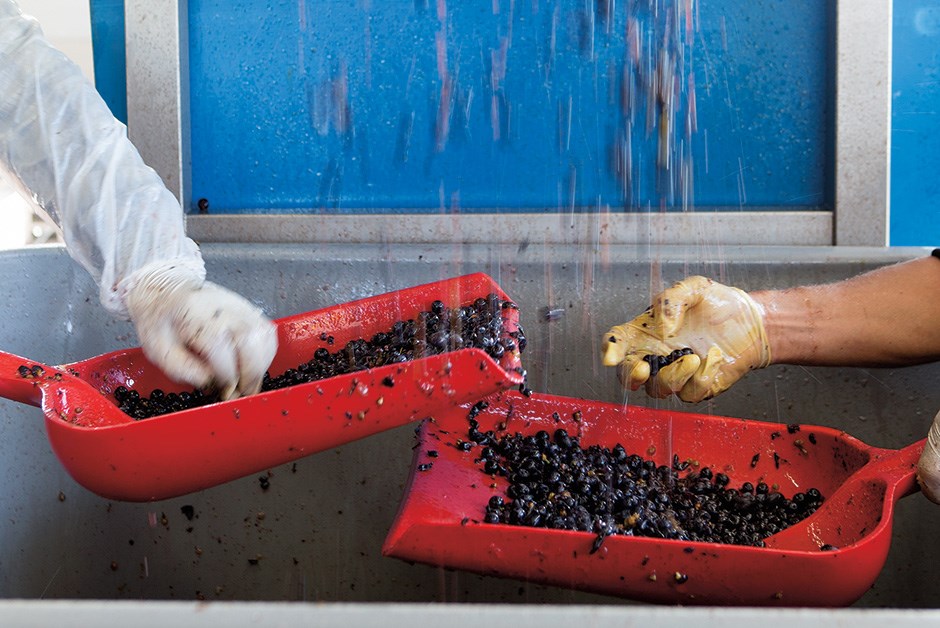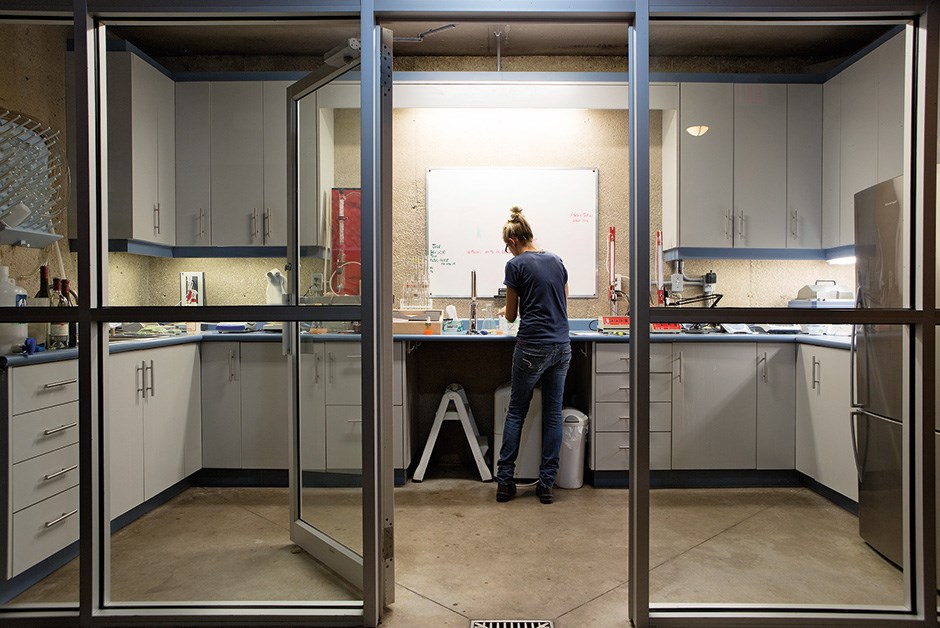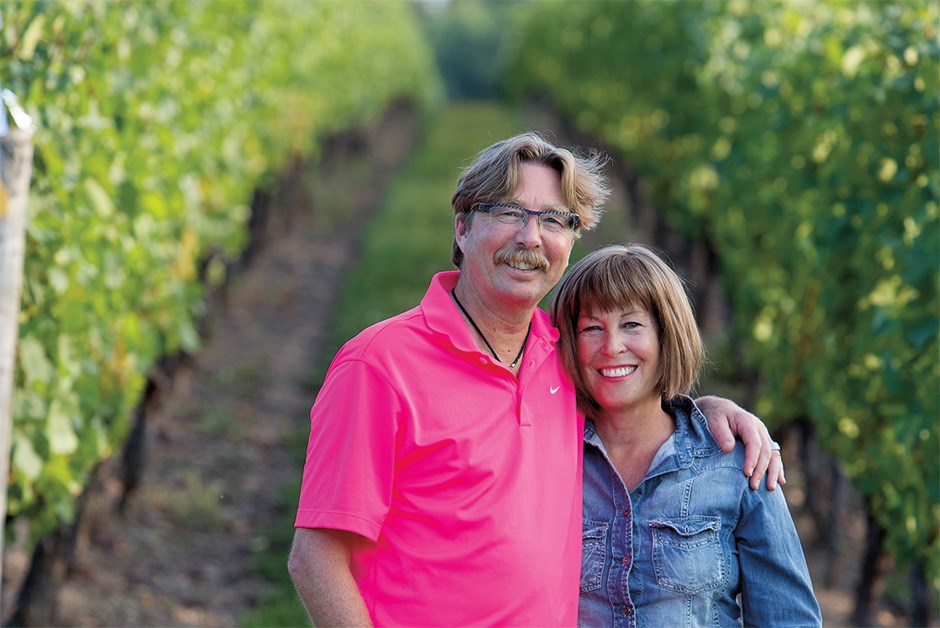Grape Expectations
By: Rick VanSickle
The lights of Toronto twinkle on the horizon as dusk settles on a late summer’s day steeped in the humidity of the Great Lakes. In Canadian wine country, the night is perfectly calm as Graham Rennie’s dinner guests mingle on the pool deck of his estate, overlooking 44 acres of vineyards. The big city, an hour’s journey south by car, looks enticing from this lofty vantage point across Lake Ontario. But to the men who have gathered here to break bread, exchange stories and share their wine,it might as well be a million miles away.
Rennie and most of his guests made their financial mark in that sparkling world. Martin Malivoire is a 35-year veteran of the Canadian film industry and a venture capitalist, Harald Thiel is the founder and former president of an audio-visual services company, Jim Young is an investor and Len Pennachetti is the founding partner and president of Cave Spring Cellars in Niagara. The city across the lake is their domain. Tonight, however, is about their domaine.
These men represent a new wave of business-savvy vintners who are staking a claim in the burgeoning Niagara wine region of Ontario. They could have planted their fortunes in the vineyards of California, France or Italy; instead they saw, in their own backyard, a chance to develop one of the youngest, most promising wine regions on the planet.
The Niagara Peninsula is home to more than 80 wineries and has 13,600 acres under vine. Its prevailing geological feature is the Niagara Escarpment, a UNESCO Biosphere Reserve, best known as the ridge over which thunders the wondrous Niagara Falls. Its high elevations make for a gradual spring warm-up and, in the fall, the slopes trap warm lake air, extending the grape-growing season late into October.
Niagara’s modern wine industry was born in the tiny town of Niagara-on-the-Lake in the mid-1970s and made famous by its internationally recognized and much-awarded honey-sweet Icewines. The wine region has slowly spread west to the community of Beamsville and its surrounding area, where many believe that the best expression of Niagara’s coolclimate grapes can be found. Tonight, Rennie, the founder of an institutional fund management company, brings together this small group of likeminded Beamsville Bench vignerons for an informal evening of camaraderie, fine cuisine and great Niagara wine.
Local chef Stephen Treadwell, of Treadwell Farm to Table Cuisine, has whipped up a meal focused on the bounty of the region: heirloom tomatoes from local grower Herbanity, seared perch from nearby Lake Erie, celebrated charcutier Mario Pingue’s chorizo and succulent, falloff-the-bone short ribs from Cumbrae’s farms. Len Pennachetti has brought his delicious 2008 Riesling CSV, which garnered 90 points in Wine Spectator magazine. Its citrus, peach, honeycomb and mineral notes work brilliantly with the perch, while Harald Thiel’s silky Hidden Bench 2005 Pinot Noir is a perfect match with the short ribs.
Niagara wines are defined by deep clay and till soil with a high proportion of shale and limestone. The latter contributes to the characteristic minerality of the region’s rieslings, chardonnays and pinot noirs. Almost every grape you can imagine is grown here and made into wine with varied success. And, of course, Niagara’s Icewine, created from grapes frozen on the vine in the dead of winter, is a sweet treat perfected here and enjoyed around the world.
These winery owners are now bringing the kind of investment needed to build the region’s reputation beyond Icewine. To compete globally takes innovation, vision and commitment even when the financial return is years down the road. When Martin Malivoire, for example, acquired his first Beamsville Bench vineyard in 1995, he found himself completely engaged by the challenges of growing and making wine by his first harvest the following year. He and his wife Moira then decided to develop a small boutique winery and The Malivoire Wine Company was born – unique because it was the first gravity-fed winery in the region. The system allows Malivoire to move wine prior to bottling, with a minimum of agitation and oxidation, optimizing its flavor and complexity. He also believes in sustainable farming methods, hand harvesting of grapes and minimal intervention in the vineyards.
Between 1995 and 2000, they planted close to 50 acres of chardonnay, pinot gris, gewürztraminer, gamay and pinot noir. “Our founding philosophy is that our soil, climate, grape varieties and winemaking methods must yield results equal to or better than those anywhere else where wine grapes are grown,” Malivoire insists. “We’re defining our style here.” That style appealed to the palate of influential British wine critic Jancis Robinson, who raved about Malivoire’s 2004 Moira Vineyard Chardonnay, giving it 17 points out of 20.
Like Malivoire, Harald Thiel also became a full-time winery owner, selling his audio-visual company in 2001. The epiphany for Thiel came when he drank two 1998 wines – a Temkin-Paskus Chardonnay and a Vineland Estates Winery Red Meritage – both from Niagara and made from grapes grown in the Rosomel Vineyard (which he has since purchased). “These wines told me that world-class wines were possible on the Niagara Bench,” Thiel says.
Now he walks his vineyards every day and works closely with his winemaker and vineyard manager to constantly improve his product. Thiel’s Hidden Bench winery is an artisanal and sustainable operation that uses geothermal energy for heating and cooling, and welcomes visitors in a small but quaint tasting room renovated from a farmhouse built in 1860. The single-vineyard rieslings, chardonnays and pinot noirs are all made from 100-percent certified organically grown fruit. Thiel’s wines command some of the highest prices in Niagara: $75 for his top Bordeaux-style red blend. They are among the finest examples of where the region is headed – wines full of personality and purity of flavor that are a perfect reflection of the mineral-rich local soil.
This is what attracted Jim Young, too. He’s chairman of the board of Angels Gate Winery; his brother John is president. Young has explored the great wine regions of the world but believes that the Beamsville Bench has the potential to evolve into one the most important anywhere, given that it shares many key attributes (microclimate, limestone-clay soils, hillside drainage, sunlight positioning) with Burgundy, Bordeaux and Napa Valley.
Angels Gate is planning to add to its 35,000-case production with an ultra-premium tier made from a vineyard purchase. “In the winemaking world right now, Niagara is very hot because of the global movement to less alcohol, higher acidity and greater ageability,” Young points out. In Niagara, winemaking is about experimentation: What grows best in a climate that ranges from blistering hot summers to vine-killing cold winters? Graham Rennie’s solution: the appassimento method, which uses dried grapes to produce small-lot artisanal wines.
The dream to own a vineyard, for Rennie and his wife Christine, was fueled by a passion for wine that began in the early 1980s. The newly married couple had traveled to many of the famous wine regions, including Napa Valley, Oregon and France, but it was on the Beamsville Bench, a 40-minute drive from their former home in Oakville, that they came across an old, weathered farm and vineyard. It had suffered decades of neglect, “but when Christine looked at the view across Lake Ontario and said, ‘Yes, this is the place,’” he says, that was it.
The Rennies began as grape growers but now take only a small portion of their own grapes and use the Angels Gate facility to produce about 700 cases of super-premium pinot noir, chardonnay and the appassimento style of wine. Rennie and Angels Gate are also investors in a temperature controlled drying facility being developed in partnership with Niagara’s top horticultural research facility, the Vineland Research and Innovation Centre. In the absence of a long, hot growing season, Rennie explains, cool-climate wines made without the appassimento method can be tannic and acidic. “This slow style of winemaking lends richness and depth to Ontario-produced Bordeaux varietals,” he says.
Rennie’s first commercial release of his appassimento was the 2010 Gaia, an extravagant wine made from merlot using fruit dried for 57 days. The result is an extraordinary wine with a beefy, hedonistic nose and layers of highly extracted maraschino cherry, spice, chocolate and espresso notes.
Dinner is winding down. The final course in chef Treadwell’s menu is a crumble of local Whitty Farms peaches with Mennonite granola and sour-cream ice cream. After an evening of vigorous debate on the merits of various grape varietals and winemaking techniques, these wine barons of the new Niagara are silenced by the decadent goodness.
For them, whether it’s the world of business or the world of wine, mediocrity is the enemy. As Rennie explains, “Global wine connoisseurs know we can produce premium white wines here in Niagara; given the unique terroir of my vineyard site and combining New World winemaking with Old World techniques, I plan to challenge the view that we can’t also produce amazing red wines in every vintage here, too.”
